Best Masonry Paint: 6 Top Picks for Brick, Render and More
What is the best masonry paint? Our expert picks his top 6 for the perfect finish for your masonry project
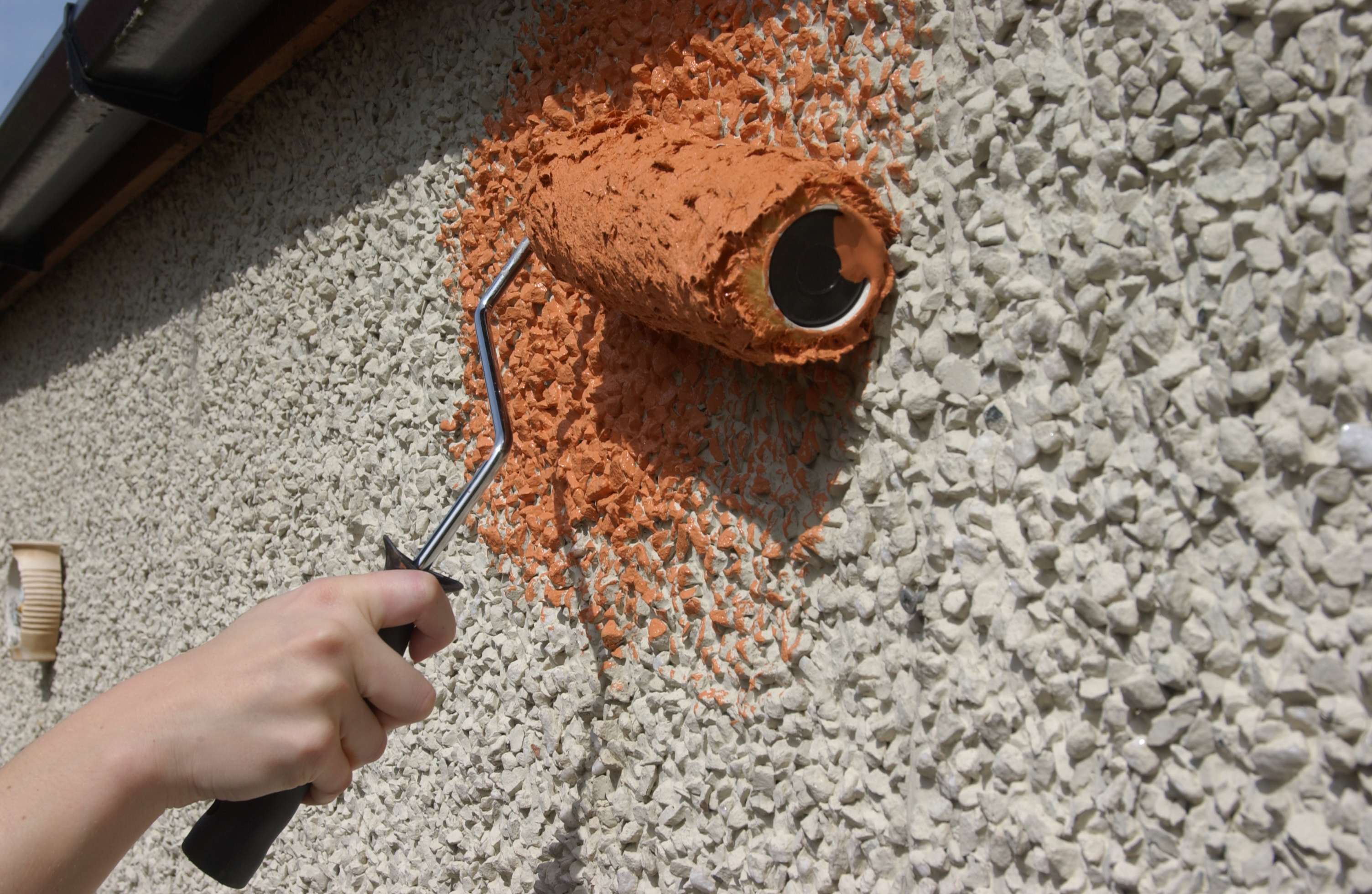
Getting your hands on the best masonry paint will add extra kerb appeal and help weatherproof brickwork, render, pebbledash, concrete and any other masonry-based exterior. You can give the outside of your home a fresh new look that gives long-lasting protection for years to come.
Masonry paint is flexible, crack-resistant and waterproof. Many contain special chemicals so that they can resist the growth of mould, algae and make the paint easy to wash. Which means it will stay looking good for longer.
If you want a smooth straightforward finish that is easy to apply with rollers or brushes — and in some cases a paint sprayer — then you need a smooth masonry paint. And there are plenty of colours to choose from.
(MORE: Best Paint Brushes)
The popular alternative to smooth is textured masonry paint which is great for homes near the sea or in cities with high pollution as they typically offer more protection for any masonry work.
What is the Best Masonry Paint?
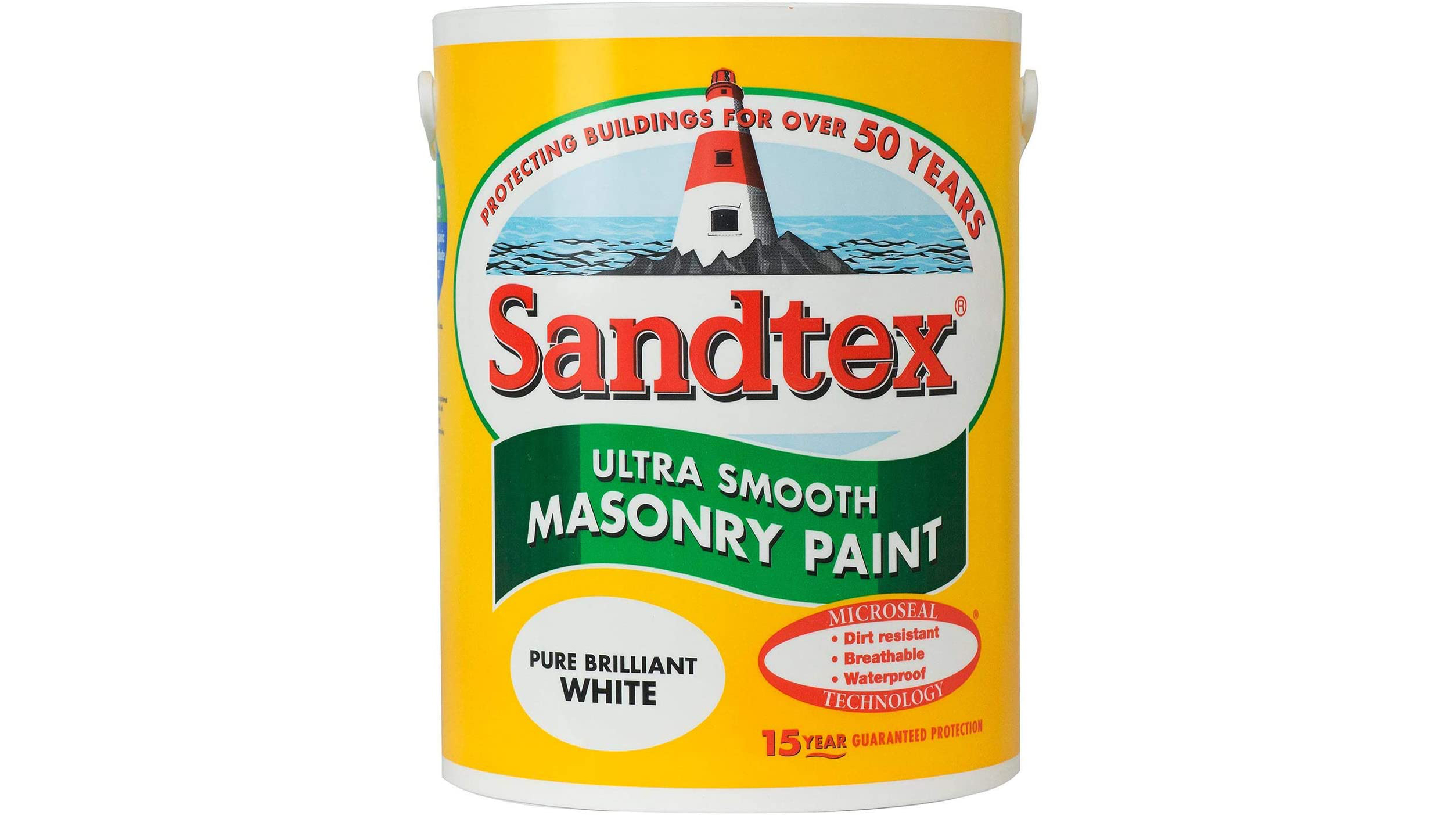
Sandtex Ultra Smooth Masonry Paint
Specifications
Reasons to buy
Reasons to avoid
When working outside an exterior masonry paint that dries quickly is a real bonus, and this is exactly what you get with this offering from Sandtex. It is rainproof within an hour of application and fully dry and ready for another coat within three to four hours. And with two coats being the recommendation for the best finish you could have your outside painted in a half day.
The paint is suitable for most dry exterior masonry surfaces including rendering, pebbledash, concrete, building blocks and brickwork, giving them a smooth waterproof, peel, dirt and mould resistant finish meaning it will stay looking good for longer.
It’s easy to apply — with a brush, roller or spray — with 5 litres giving around 60 square metres of coverage on standard smooth surfaces. But be warned if you have a deep finish like pebbledash you won’t get as much.
Buy Sandtex Ultra Smooth Masonry Paint
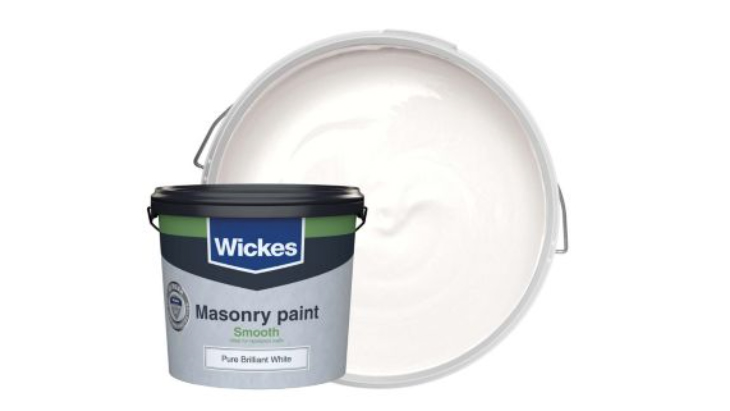
Wickes Masonry Smooth
Specifications
Reasons to buy
Reasons to avoid
If you don’t want to spend big on masonry paint but still want a decent finish then Wickes own brand paint could be just what you are looking for. A smooth easy to apply paint it covers well and quickly — especially if you are using a roller. It’s flexible, waterproof and crack-resistant, it helps repel mould, algae and sunlight meaning that your good-looking finish should last for years before you need to reapply.
(MORE: Best Paint Rollers)
Alongside the standard white matt finish, you can choose from around five other colours in 5 or 10-litre tins. It is also available in textured options which offer more protection against harsher elements.
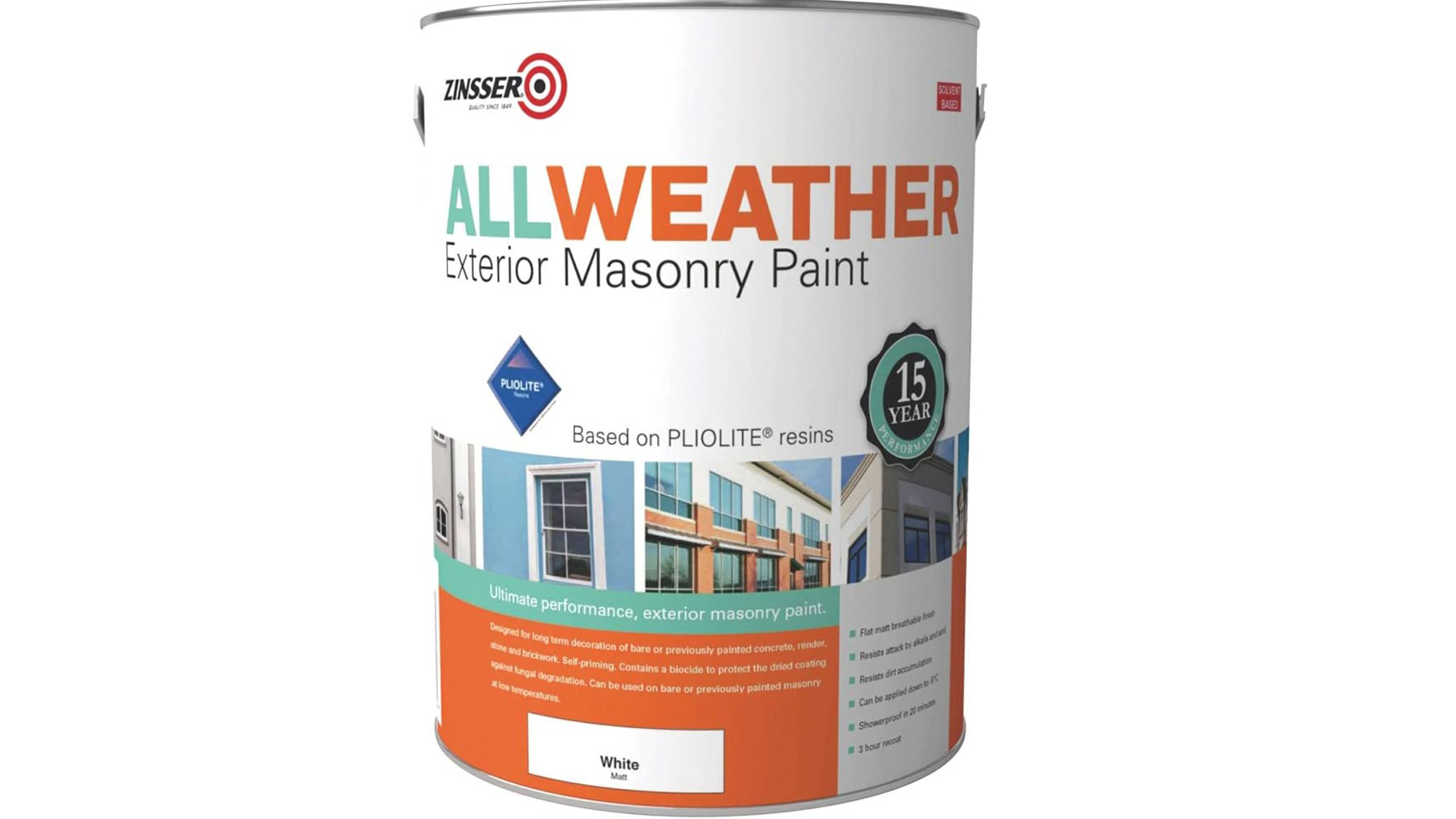
Zinsser All Weather Exterior Masonry Paint
Specifications
Reasons to buy
Reasons to avoid
If you want a professional long-lasting finish that is easy to apply and provides excellent colour retention then this offering from Zinsser is definitely a masonry paint you should put on your shopping list.
But be warned it’s not cheap, it costs around three times as much as most everyday masonry paint. But you get plenty for your money. It is self-priming and will bond to existing paints without sanding and is re-coatable in 3 hours. It’s showerproof within 20 minutes and can be applied down to -5°C, which means you can apply in almost any conditions. It offers excellent resistance against cracking, blistering and flaking and with two coats of paint you will be protecting your masonry against rain and severe weather for years to come.
Buy Zinsser All Weather Exterior Masonry Paint
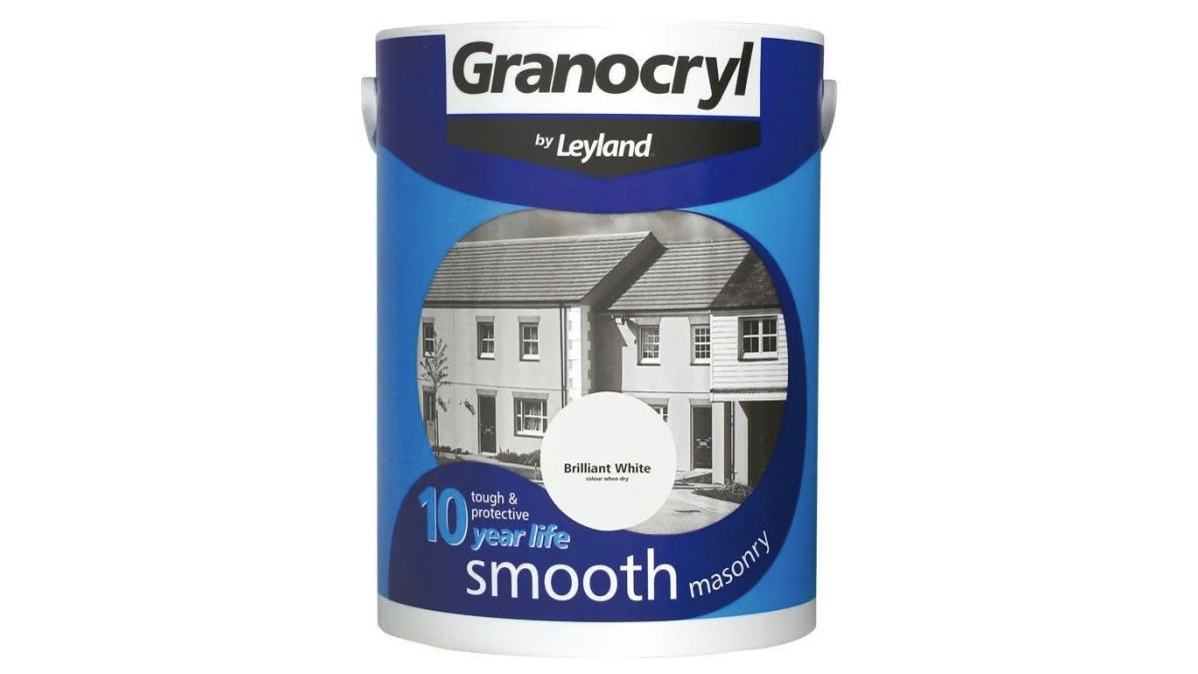
Leyland Granocryl Smooth Masonry Paint
Specifications
Reasons to buy
Reasons to avoid
If you want a no-nonsense exterior and interior masonry paint that is good value for money then this offering from professional paint brand Leyland is a great choice for your next paint project. A water-based masonry paint it is easy to apply with brush, roller, spray or paint pad and will cover all the usual surfaces — render, brickwork, pebbledash and concrete — well.
Like a lot of masonry paints you will need a couple of coats to get a decent finish, but it covers well and provides a durable weatherproof finish that last for up to a decade. On the colour front there is plenty of choice, alongside the ever-popular brilliant white there are another 12 colours to choose from. There is also a textured version available if you need to cover any hairline cracks. Again this is available in 13 colours.
Buy Leyland Granocryl Smooth Masonry Paint
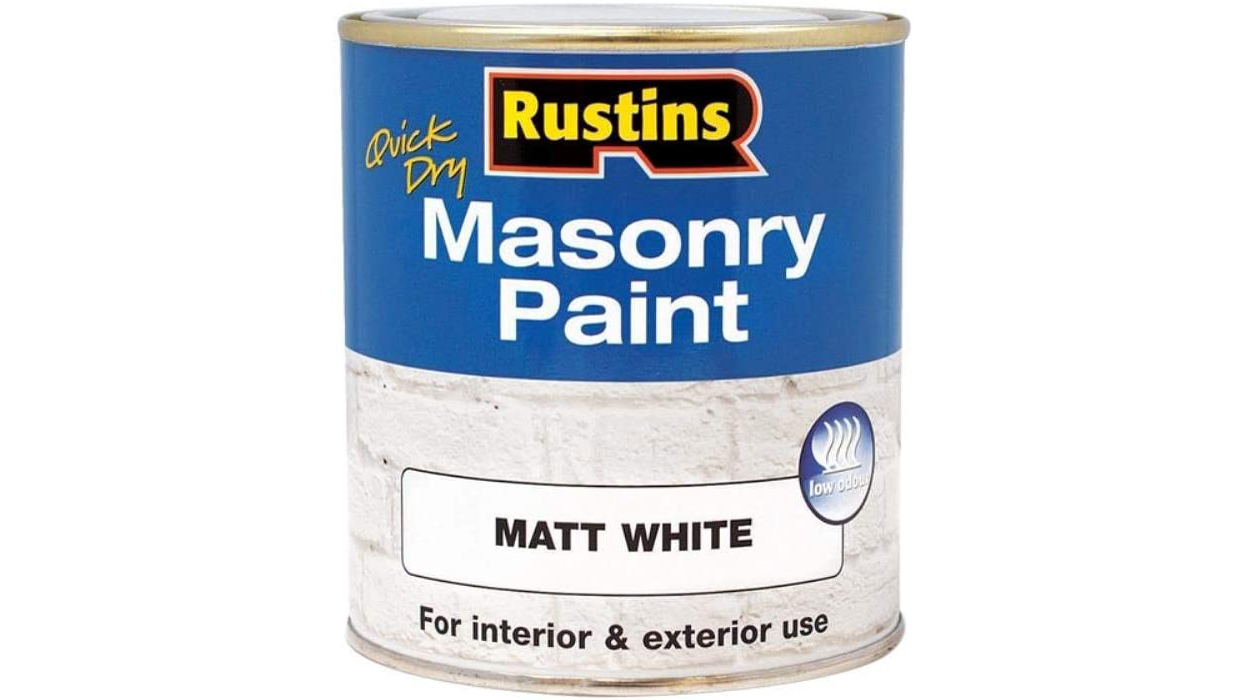
Rustins Masonry Paint
Specifications
Reasons to buy
Reasons to avoid
If you have a small exterior — or interior — masonry paint job that needs doing then this could be the answer. The paint provides good coverage but is only available in small tin sizes. You can choose from 250ml or 500ml, but even a large tin only provides seven square metres of coverage.
That’s about enough for a for a garden wall. But it is easy to apply — typically with a large brush — and if the surface you are painting is clean, dry, free from dust you should only need one coat to get a good finish. A quick drying paint it will be touch dry within 30 minutes to an hour. But you will need to wait at least four hours if you need to add another coat.
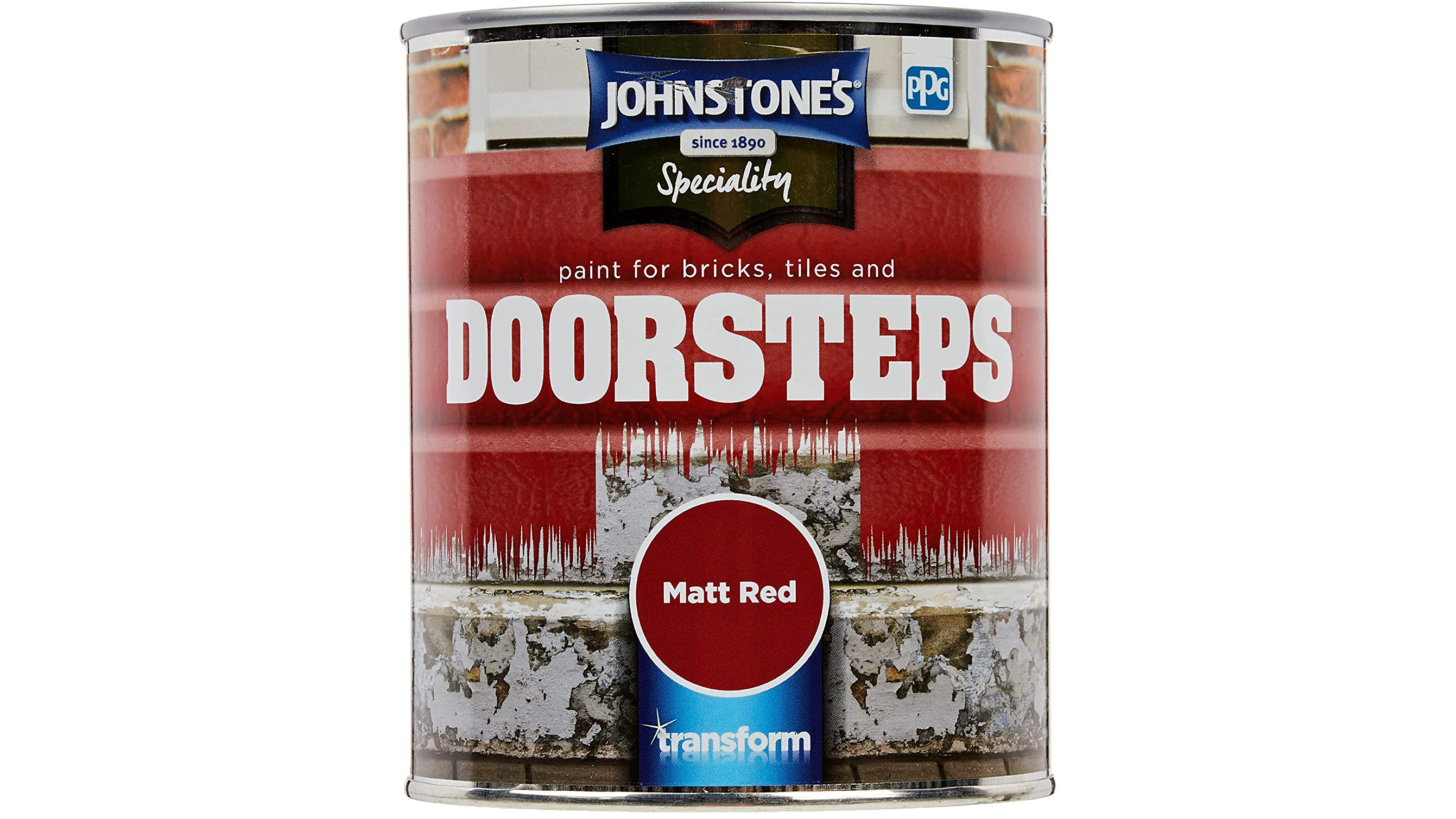
Johnstone's Paint for Bricks, Tiles and Doorsteps
Specifications
Reasons to buy
Reasons to avoid
If you are looking to paint concrete, stone, brick, paving, unglazed tiles, roof tiles and slate then this masonry paint from popular paint manufacturer Johnstones could be the answer that you are looking for. It is the ideal paint for doorsteps thanks to is tough durable finish that not only provides good weather protection but will last for years to come.
It provides good coverage and is easy to apply with a brush or roller, but is only available in the traditional brick red seen on homes across the land. On the downside it has a very long drying time — 16-24 hours — so if you are painting your doorstep make sure that you are well prepared and wont need to use it too soon.
Buy Johnstone's Paint for Bricks, Tiles and Doorsteps
Choosing the Right Masonry Paint
The main purpose of masonry paint is to protect and make whatever surface you are painting look good. So how do you go about choosing the right masonry paint for your project?
Most everyday masonry paints are water-based meaning they are easier to apply and easy to clean, making them the ideal choice for the average DIYer. These work perfectly fine on most properties and surfaces and are commonly applied with brushes or rollers, with some working with paint sprayers as well. You need to make sure that your masonry paint is crack and mould resistant - most are.
Look to see if it offers UV protection - again most do, as this helps the colour from fading.
(MORE: How to Find Painters and Decorators)
Smooth and textured are the two common masonry paint choices. Smooth is easier to apply and provides a smooth finish — like an indoor emulsion. Textured masonry paint offers a textured finish — is great great for filling small cracks — and provides better protection. They are oil-based masonry paints available but you only really need these if you need to apply in more adverse weather conditions ie. low temperatures.
What Prep Work is Required for Masonry Paint?
You will need to remove as much loose paint as possible and get it clean. The better your prep the better the finish. A lot of masonry paints are self-priming or don’t need any primer, but if your masonry is in poor condition you might need to apply a masonry primer. But generally, all you need to do is apply two coats and your masonry will look great for years to come.
Get the Homebuilding & Renovating Newsletter
Bring your dream home to life with expert advice, how to guides and design inspiration. Sign up for our newsletter and get two free tickets to a Homebuilding & Renovating Show near you.
Steve Jenkins is a freelance content creator with over two decades of experience working in digital and print and was previously the DIY content editor for Homebuilding & Renovating.
He is a keen DIYer with over 20 years of experience in transforming and renovating the many homes he has lived in. He specialises in painting and decorating, but has a wide range of skills gleaned from working in the building trade for around 10 years and spending time at night school learning how to plaster and plumb.
He has fitted kitchens, tiled bathrooms and kitchens, laid many floors, built partition walls, plastered walls, plumbed in bathrooms, worked on loft conversions and much more. And when he's not sure how to tackle a DIY project he has a wide network of friends – including plumbers, gas engineers, tilers, carpenters, painters and decorators, electricians and builders – in the trade to call upon.

